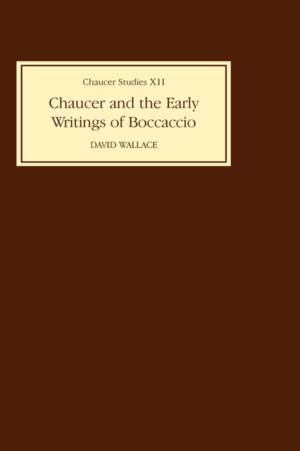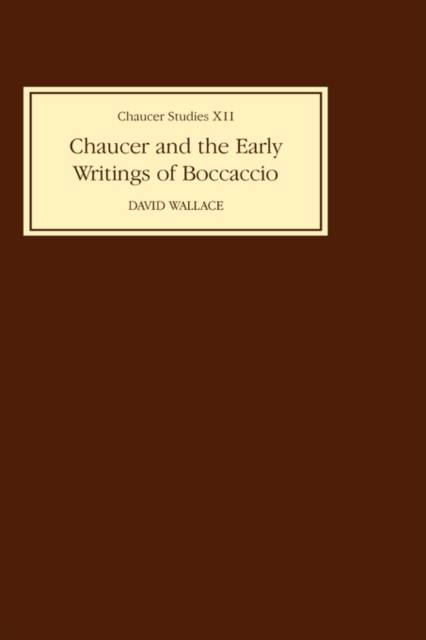
- Afhalen na 1 uur in een winkel met voorraad
- Gratis thuislevering in België vanaf € 30
- Ruim aanbod met 7 miljoen producten
- Afhalen na 1 uur in een winkel met voorraad
- Gratis thuislevering in België vanaf € 30
- Ruim aanbod met 7 miljoen producten
Zoeken
Omschrijving
David Wallace's examination of the aims and literary affiliations of Boccaccio's early writings provides an indispensable preface to and context for an informed appraisal of Chaucer's usage of Boccaccio. Previous studies of the relationship between the work of the two poets have tended to consider Chaucer's borrowings without making a thorough study of the traditions which shaped the Italian writer's work. Wallace argues that Boccaccio was not primarily concerned with winning recognition at the Angevin court, but was chiefly concerned with fashioning an identity for himself as an illustrious vernacular author. Chaucer recognised that both the Filostrato and Teseida derived their basic narrative capabilities from popular tradition analogous to that of the English tail-rhyme romance. Following a detailed analysis of Chaucer's translation practice in Troilus and Criseyde, Wallace concludesthat it was Boccaccio's attempt to develop a narrative art occupying the middle ground between popular and illustrious, domestic and European traditions that Chaucer found so uniquely congenial and instructive.
Specificaties
Betrokkenen
- Auteur(s):
- Uitgeverij:
Inhoud
- Aantal bladzijden:
- 350
- Taal:
- Engels
- Reeks:
- Reeksnummer:
- nr. 12
Eigenschappen
- Productcode (EAN):
- 9780859911863
- Verschijningsdatum:
- 30/05/1985
- Uitvoering:
- Hardcover
- Formaat:
- Genaaid
- Afmetingen:
- 156 mm x 234 mm
- Gewicht:
- 489 g

Alleen bij Standaard Boekhandel
+ 418 punten op je klantenkaart van Standaard Boekhandel
Beoordelingen
We publiceren alleen reviews die voldoen aan de voorwaarden voor reviews. Bekijk onze voorwaarden voor reviews.











